Free street camping in Central London
image courtesy spinkney
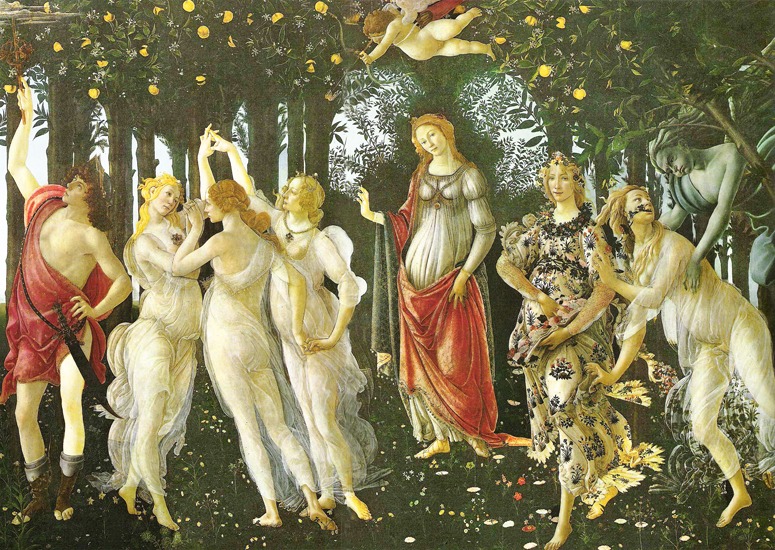 La Primavera (‘Spring’) was painted by Sandro Botticelli c1482 and is one of the world’s most popular paintings. It shows a playful group of young maidens, two males and one putti. They are in a garden grove of orange trees with a flowery mead beneath their feet. The charming scene is interpreted as an allegory of Neoplatonic and Alchemical love, according to the philosophy of Marsilio Ficino. Venus is the central figure, as she is in many garden scenes. The Zephyr on the on the right tries to rape Chloris but then transforms her into Flora (the goddess of flowers). Alchemists believed one must go through difficult times in the progress of the soul towards perfection, as base metals must go through fire to become gold. The garden represents the physical world and the painting was partly inspired by Ovid’s description of the arrival of Spring
La Primavera (‘Spring’) was painted by Sandro Botticelli c1482 and is one of the world’s most popular paintings. It shows a playful group of young maidens, two males and one putti. They are in a garden grove of orange trees with a flowery mead beneath their feet. The charming scene is interpreted as an allegory of Neoplatonic and Alchemical love, according to the philosophy of Marsilio Ficino. Venus is the central figure, as she is in many garden scenes. The Zephyr on the on the right tries to rape Chloris but then transforms her into Flora (the goddess of flowers). Alchemists believed one must go through difficult times in the progress of the soul towards perfection, as base metals must go through fire to become gold. The garden represents the physical world and the painting was partly inspired by Ovid’s description of the arrival of Spring
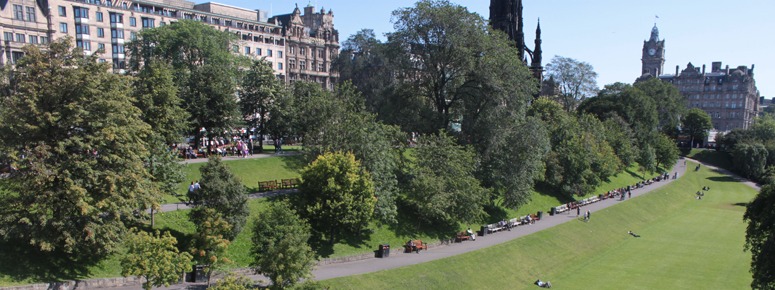
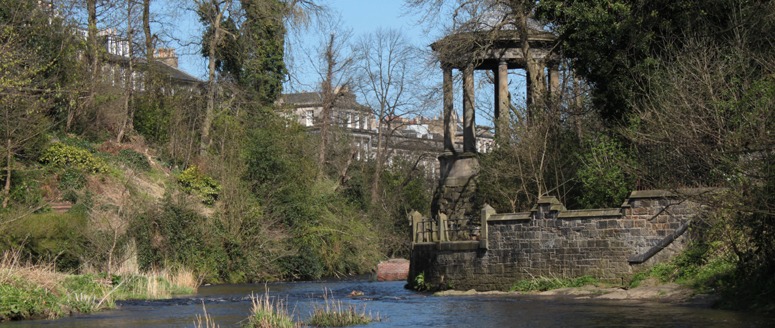 Following upon the discussion of Copenhagen’s Greenfinger Plan, here are two photographs of my hometown. They show examples of ‘urban landscapes’. BUT BUT BUT I do not regard the buildings as ‘urban’ bits and the green bits as ‘landscape’. I regard the scenic composition of buildings+landform+vegetation+paving+water (ie the Five Compositional Elements) as urban landscape compositions. Another reason for calling these examples Urban Landscapes is that they are beautiful. The below photograph of part of what was once of the most important early baroque-influenced gardens in England (Sayes Court, in Deptford) now lacks beauty and I would rather call it an ‘urban wasteland’ than an ‘urban landscape’. Sayes Court was nearly the first place to be saved from demolition by the National Trust. Things didn’t quite work out! Should any elements of the historic design be restored when Convoy’s Wharf is re-developed? The current design looks a bit Dubai-on-Thames but with duller architecture. The developers are Hutchinson Whampoa and the architects are bptw working with Aedas Architecture.
Following upon the discussion of Copenhagen’s Greenfinger Plan, here are two photographs of my hometown. They show examples of ‘urban landscapes’. BUT BUT BUT I do not regard the buildings as ‘urban’ bits and the green bits as ‘landscape’. I regard the scenic composition of buildings+landform+vegetation+paving+water (ie the Five Compositional Elements) as urban landscape compositions. Another reason for calling these examples Urban Landscapes is that they are beautiful. The below photograph of part of what was once of the most important early baroque-influenced gardens in England (Sayes Court, in Deptford) now lacks beauty and I would rather call it an ‘urban wasteland’ than an ‘urban landscape’. Sayes Court was nearly the first place to be saved from demolition by the National Trust. Things didn’t quite work out! Should any elements of the historic design be restored when Convoy’s Wharf is re-developed? The current design looks a bit Dubai-on-Thames but with duller architecture. The developers are Hutchinson Whampoa and the architects are bptw working with Aedas Architecture.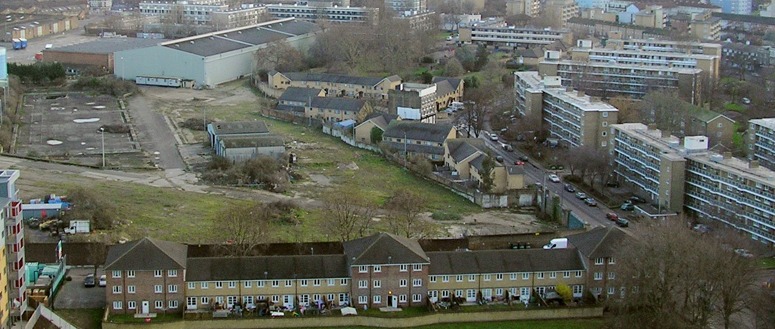
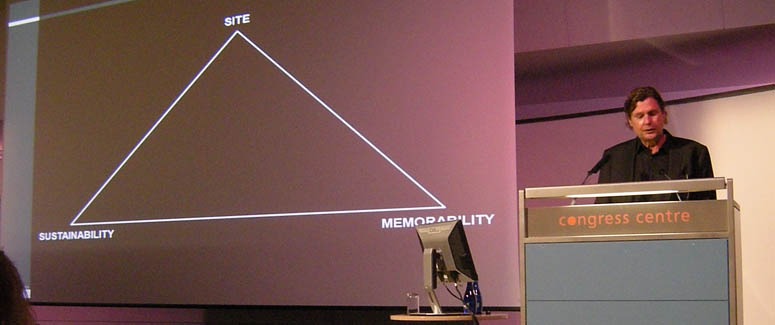 George Hargreaves gave the first Geoffrey Jellicoe lecture to the Landscape Institute yesterday and, in truth, there was something of Jellicoe’s style about it. He began with a terse proposition and then mused through a large set of images. Hargreaves proposition was that the design of public open space takes place around three poles: Site, Sustainability and Memorability. He took us though a portfolio of former projects, so many in fact that common features became obvious: a stylized geometry (which reminded me of Alphand) but projected as sculpture into three dimensions. This worked well on occcasion but, so far as I could see had nothing to do with Site, Sustainability or Memorability. Thinking about the 2012 London Olympics, the first questioner made the point I raised on this webpage when the site was chosen and made again more recently: ‘what about the existing site and its memorability?’ ‘Ha’, said George, ‘we did not concentrate on Memorability for the 2012 Olympic Park. We did not try to keep industrial artifacts because the site was going to have too much traffic’.
George Hargreaves gave the first Geoffrey Jellicoe lecture to the Landscape Institute yesterday and, in truth, there was something of Jellicoe’s style about it. He began with a terse proposition and then mused through a large set of images. Hargreaves proposition was that the design of public open space takes place around three poles: Site, Sustainability and Memorability. He took us though a portfolio of former projects, so many in fact that common features became obvious: a stylized geometry (which reminded me of Alphand) but projected as sculpture into three dimensions. This worked well on occcasion but, so far as I could see had nothing to do with Site, Sustainability or Memorability. Thinking about the 2012 London Olympics, the first questioner made the point I raised on this webpage when the site was chosen and made again more recently: ‘what about the existing site and its memorability?’ ‘Ha’, said George, ‘we did not concentrate on Memorability for the 2012 Olympic Park. We did not try to keep industrial artifacts because the site was going to have too much traffic’.
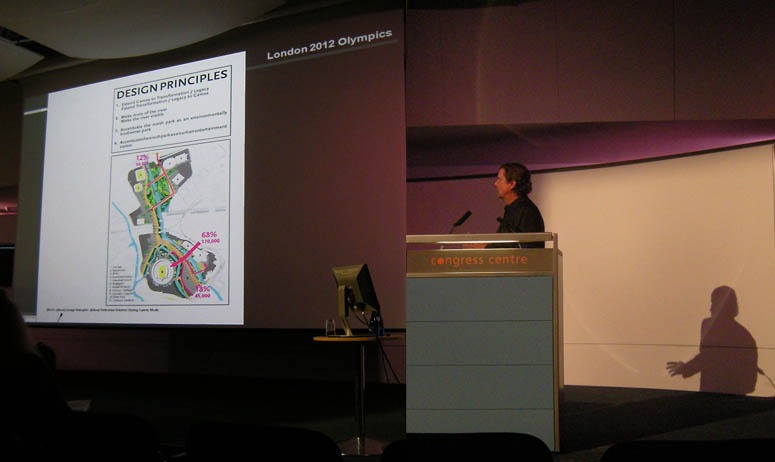
Note George Hargreaves' shadow, on the left - is he reaching for something? Could it be a design theory?
Hargreaves was also questioned about the differences between his landscape master plans for the Sydney Olympics and the London Olympics. He explained: ‘they are completely different – at Sydney the river was on the edge of the site and in London it is in the middle’. Site is obviously an important consideration.
Copenhagen’s Finger plan (left) is appealing: easy to remember and attractive for the way it gives prominence to greenspace in the planning of a capital city. But, for the way it has been used (centre) it should be called the Grey Finger Plan. The idea was to run out high-speed railway lines from central Copenhagen and use them as urbanisation spines, with the space between the fingers retained as greenspace. In a real Green Finger Plan the fingers themselves would be green, as on the right-hand diagram. Here are some suggestions for how it could have worked:
The Danish name is the København 5 Fingerplanen but is described as the Green Finger Plan in the European Landscape Convention and other places. ‘Storkøbenhavn’ means ‘Metropolitan Copenhagen’.
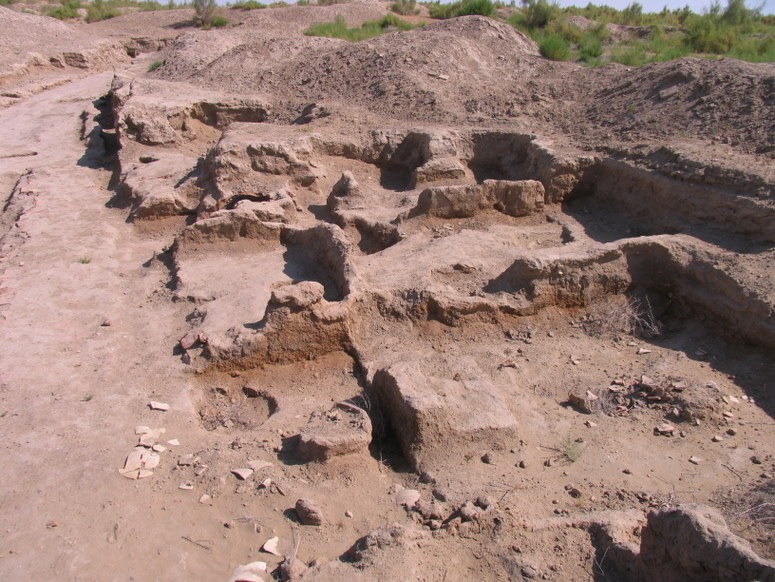 Better not to name it, for fear of attracting more tourists, but this is a silk road city in Central Asia. It was opened up by archaeologists and then left in this condition. The excavators will have published a learned report on their findings. Then they left it like this – as a tourist attraction which the government can put into guidbooks, hoping to create jobs and attract hard currency which can be spent on weapons. Now the rain falls on the mud walls, the sun cracks them, the wind blows the dust away. Far better if the archaeologists had done something useful with their lives, instead of running university courses to teach other archaeologists to support the tourist industry.
Better not to name it, for fear of attracting more tourists, but this is a silk road city in Central Asia. It was opened up by archaeologists and then left in this condition. The excavators will have published a learned report on their findings. Then they left it like this – as a tourist attraction which the government can put into guidbooks, hoping to create jobs and attract hard currency which can be spent on weapons. Now the rain falls on the mud walls, the sun cracks them, the wind blows the dust away. Far better if the archaeologists had done something useful with their lives, instead of running university courses to teach other archaeologists to support the tourist industry.